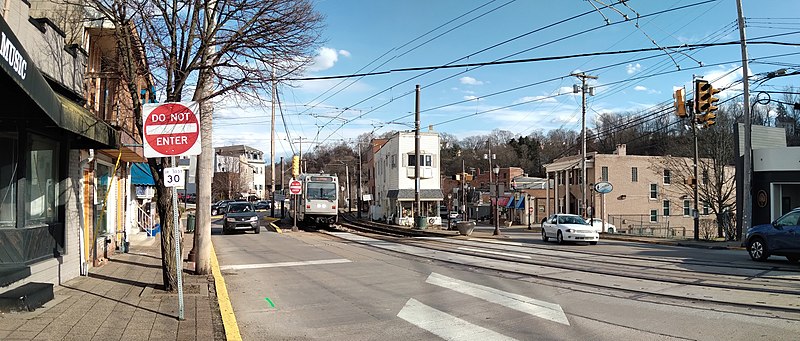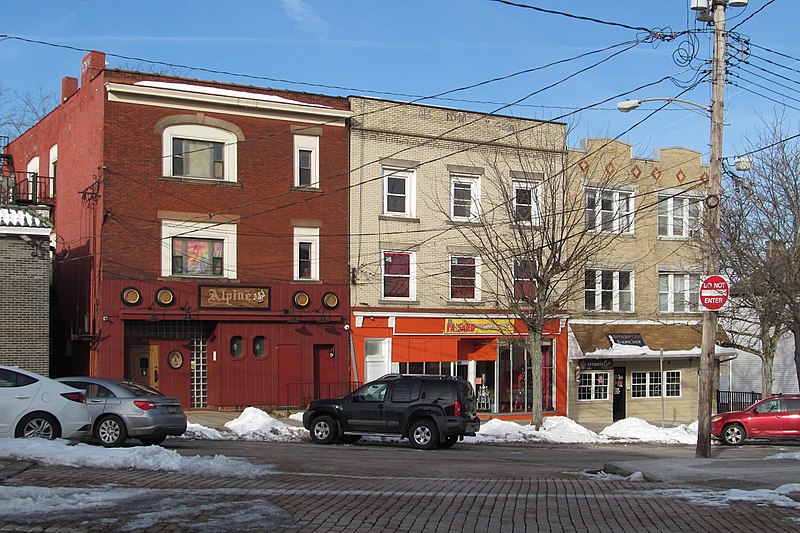
An out-of-towner might think that some horrible territorial war had happened to make Beechview residents throw a concrete wall right across the middle of Sebring Avenue. But the culprit is topography again. The streets in Beechview are laid out in a grid in defiance of the hills, and the only way to make Sebring Avenue intersect Westfield Street was with terracing.

We’ve seen terraces like these on the South Side Slopes, and here is a similar construction for a similar reason in Beechview. As you might guess from the parked cars, the street is two ways on both sides of the divide, which only adds to the delightful confusion. You can turn any which way from Sebring Avenue. The only thing you can’t do is continue on Sebring Avenue.














